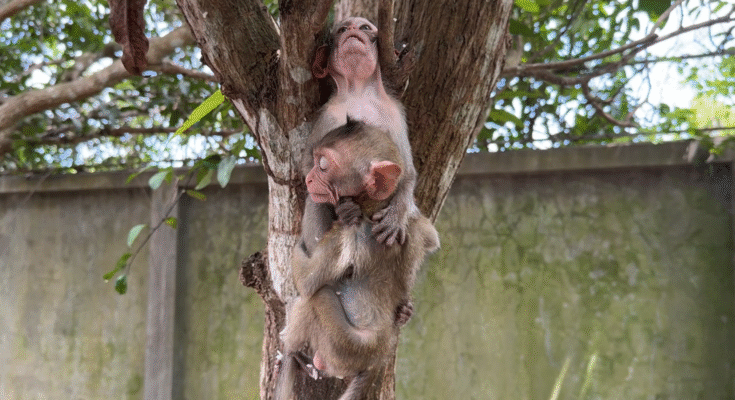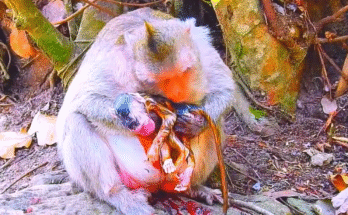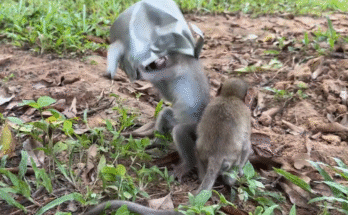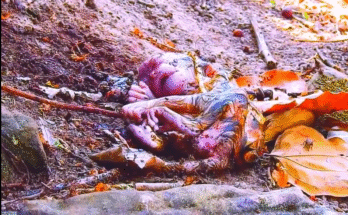In a quiet corner of the natural world, where concrete walls meet the edges of the forest, a powerful and emotional scene unfolds—a mother monkey, cradling her infant, clings tightly to the trunk of a tree. Captured in this image is not just wildlife, but a universal expression of love, care, and resilience.
The mother appears exhausted, possibly from foraging or escaping human encroachment. Her gaze is lifted to the sky, eyes half-closed, as though in silent prayer or deep reflection. Meanwhile, her young one buries its face into her chest, seeking warmth, safety, and affection. Their arms are wrapped tightly around each other, a symbol of the deep bond between parent and child that transcends species.
Surrounding them is a stark contrast—the raw textures of concrete walls topped with barbed wire, reminders of human intrusion. Yet amid this harsh backdrop, the tree offers life, shelter, and hope. Its branches cradle the pair, nature providing refuge even in confinement.
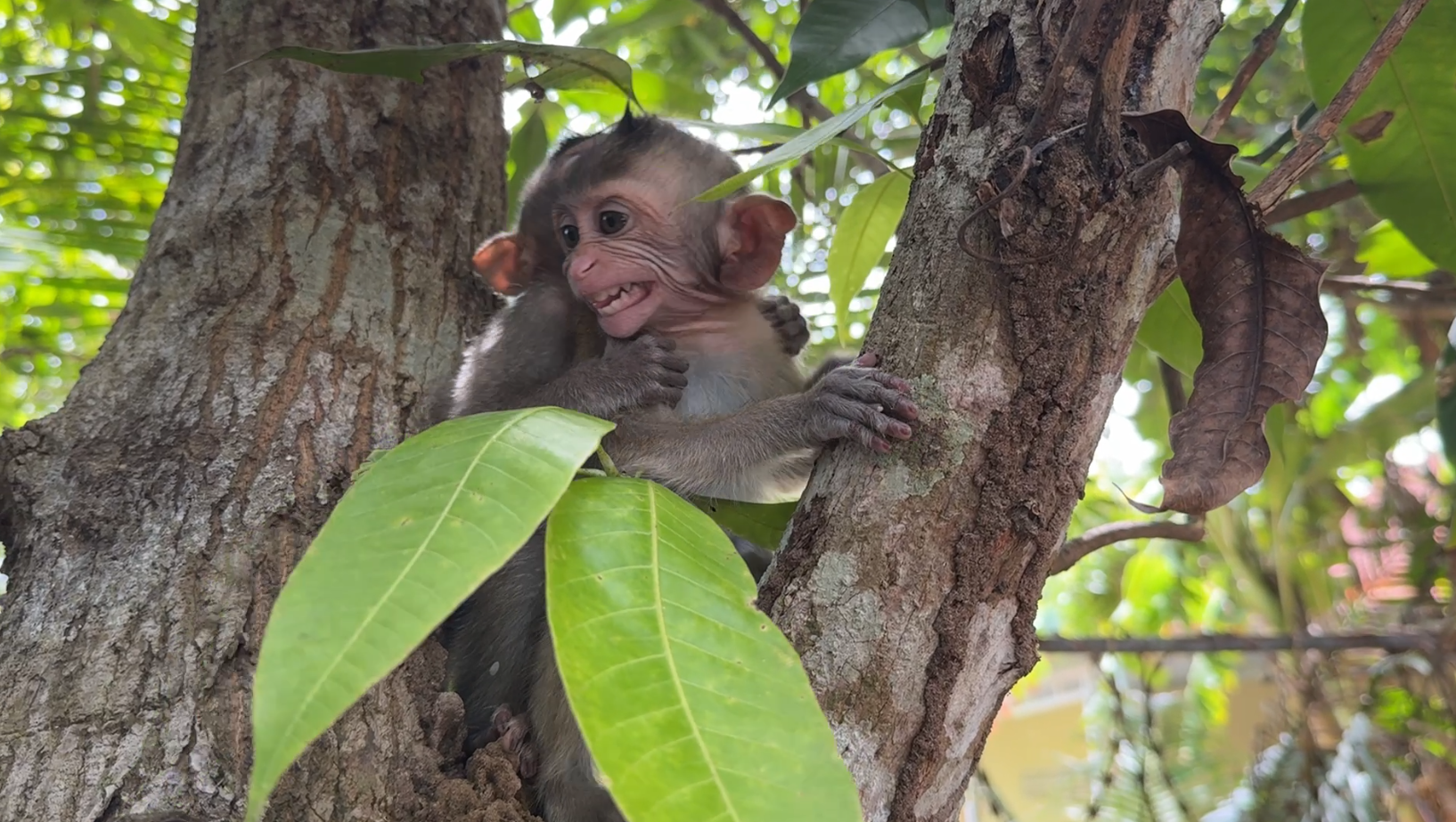
A Silent Cry from the Wild: The Heartbreaking Embrace of Two Baby Monkeys
In the hush of a forgotten corner of the world, where trees grow against the cold face of concrete, an image emerges that speaks louder than words ever could. In this photograph, two young monkeys cling to each other against the trunk of a tree, their small arms wrapped tightly in a desperate, emotional embrace. The setting is simple, yet the emotions it conveys are profound—a raw, unfiltered moment of vulnerability, love, and possibly grief.
The monkey at the top gazes skyward, its face etched with sorrow and fatigue. Its eyes, half-closed and tilted toward the heavens, evoke an almost human sense of resignation. Beneath it, the second baby buries its head into the other’s chest, eyes shut, as though trying to block out a world too harsh for innocence. Their embrace is not just for warmth, but for life—a lifeline in an environment that seems indifferent to their fragility.
The Weight of a Broken Habitat
This scene is framed not by lush jungle or wide savanna, but by a moss-stained concrete wall and rusty barbed wire—symbols of human encroachment on wildlife habitats. Nature is still here, yes, in the form of a single tree and some tangled vines, but it’s been pushed to the margins, surviving in the cracks. These two baby monkeys appear like orphans of a system that has left them behind, caught between the remnants of the wild and the cages of civilization.
The concrete wall looms in the background, dividing space, land, and life. What was once a continuous home for these animals is now fragmented into pieces by human development. The very need for them to cling to a tree in such a setting speaks volumes: perhaps they are hiding, perhaps they have lost their mother, or perhaps they are simply trying to find rest in a world that is too fast and too cruel for them.

The Universal Language of Love and Loss
What is most striking about this image is its emotional universality. You don’t need to be a biologist to understand what’s happening here. The embrace, the closed eyes, the upward gaze—all resonate with our deepest instincts. These are not just animals; they are living beings expressing fear, love, exhaustion, and hope in the only way they know how: through touch.
The image stirs questions in the viewer: Where is their mother? Are they safe? Will they survive the night? In a time when wildlife is often reduced to data in conservation reports, this photograph puts faces—innocent, expressive faces—to the crisis. It transforms abstract numbers into flesh and blood.
A Call to Action
We often overlook the silent suffering of animals living on the fringes of human society. Urbanization, deforestation, poaching, and climate change are not just distant environmental issues—they are present in every silent cry, every lonely hug, every lost look like the one captured in this photo. These baby monkeys represent thousands, perhaps millions, of similar stories playing out across the globe.
Let this image not just be a moment of reflection but a call to compassion. Support wildlife conservation. Advocate for humane urban planning that allows space for non-human life. Educate others about the impact of our choices on the animal kingdom.
Because somewhere out there, in the shadow of our progress, a pair of baby monkeys are holding on—for each other, and for hope.
